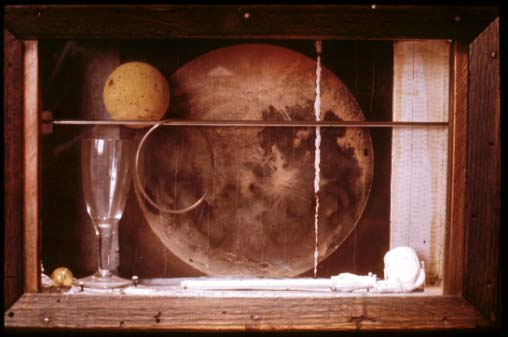
ART 102- Problems in 3D Art
PROJECT #1- AUTOBIOGRAPHICAL BOX/ A Narrative with Found Objects:
All the objects of our world weave together in an infinity of relationships to tell
the story of our existence. From personal memorabilia, to archaeological finds, to
the contents of a time capsule, we recognize how our lives are expressed through
our material culture. Going beyond the pictorial re-presentation of things, sculpture
often opts to create directly with the 'stuff' of our lives and thereby produces
a type of reference that can be both literal and metaphoric.
Make a work using found materials situated within a box like structure. Beginning
with the referential meanings of particular found objects and modifying those meanings
thru physical transformation, contextual juxtaposition and compositional structure,
create a narrative with a particular autobiographical focus.
ON NARRATIVE...
This project is about exploring ways to relate an experience or state of mind through
the use of things; a language of stuff rather than a language of words. I am asking
you to develop an autobiographical narrative but your focus within this parameter
is your choice. You might want to relate a specific event or an entire period of
your life. You might choose to focus on a significant relationship, express a personality,
or explore a subconscious impulse.
As a way to make this move from words to stuff I am having you first select the focus
of your work and then explore it fully by writing extensively (at least 5 typed pages)
about it. Use your writing as a way to get beyond the surface level of your subject.
Begin with what you already know but question your assumptions. Go beyond the basic
description of your subject to your emotional state of mind. It is this sense of
'point of view' that will be the key to your art work. Try to get a feel for the
full sensory quality of the memory or state of mind you are trying to express. This
will help make the shift from the direct nature of verbal language to the more tactile
basis of material language.
ON MATERIALS....
You can work with any materials you wish but as a way of starting I suggest that
you collect a lot of stuff so that you have a broad range to choose from. It is hard
to create from animmaterial that exists only in your head. Having materials on hand
will help you get ideas and make decisions on an intuitive level. You can use found
objects but remember that they might not be enough in themselves. The challenge is
to go beyond literal illustration. Don't just pick 'loaded' objects and let them
do all the work. To communicate a special point of view or relate a certain state
of mind, one must be able to craft meanings by modifying the objects you work with.
The purpose of the preliminary assignment focusing on object transformations is to
give you the opportunity to experiment with how to vary the meaning of a specific
found object.
ON OVERALL STRUCTURE...
The spatial context within which you place materials and objects greatly effects
the way those objects are interpreted and is central to the overall meaning of the
work. I have specified as a parameter of this project that you work with the overall
structure of a box or some other sort of spatial container. But you must decide what
the nature of this container should be. It might itself be a found object or it might
be a neutral construct. It could be a closed structure, limiting and controlling
the viewing access to the work, or it could be open and seen from many sides. You
might choose to work only within the internal space of the box or also deal with
the outside space. How will things be organized in the space? How can the container
create a sense of scale? What is the difference between inside and outside? How can
the space be articulated to suggest intangible elements like a type of atmospheric
quality, a sense of time, or a certain emotional undertone? Deciding these questions
are an essential part of creating this project.
Artists we will be looking at in slides will include :
Object Transformation examples: Marcel Duchamp, Meret Oppenheim, Man Ray, Tony Cragg,
Donald Lipski, Rona Podnick
Found Object box examples: Edward and Nancy Kienholtz, Lucas Samaras, Joseph Cornell
, Louise Nevelson,
Narrative Boxes with Found Objects/ Slides:
PLEASE DO NOT REPRINT ANY OF THE FOLLOWING IMAGES

Joseph Cornell, "Dream World", 1957
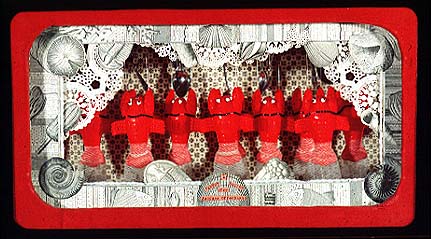
Joseph Cornell, "Pantry Ballet", 1942

Joseph Cornell, Untitled (a Butterfly Habitat), 1940
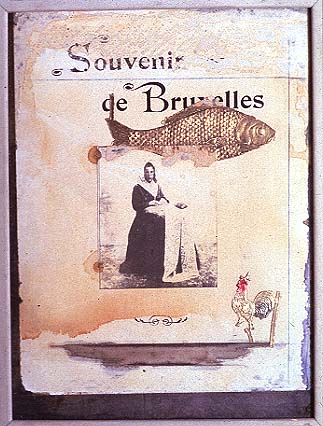
Joseph Cornell, "Hotel Eden", 1945
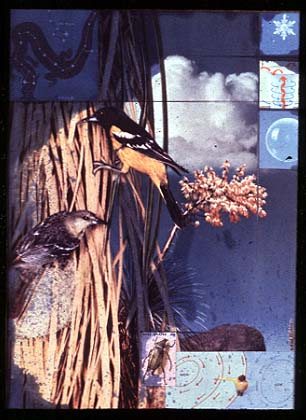
Joseph Cornell, "The Storm that Never Came"(collage), 1953.
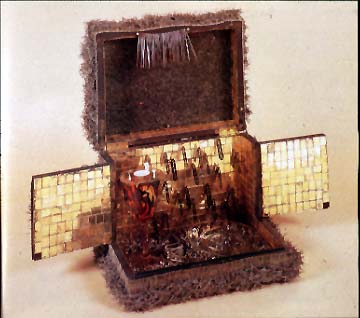
Lucas Samaras, "Box #48"
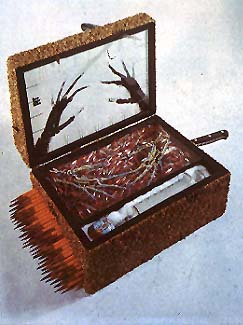
Lucas Samaras"Box #4, 1963
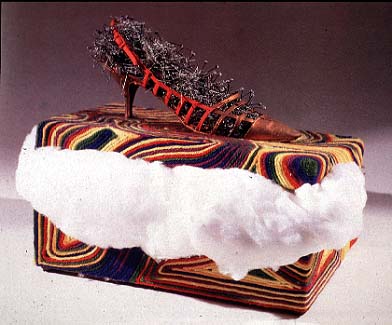

Lucas Samaras"Self-portrait Box", 1963
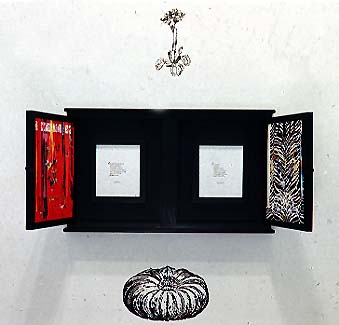

Celia Munoz, "Ella y El", 1990
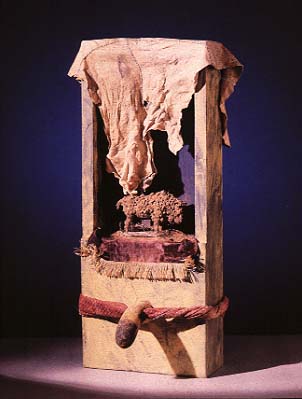

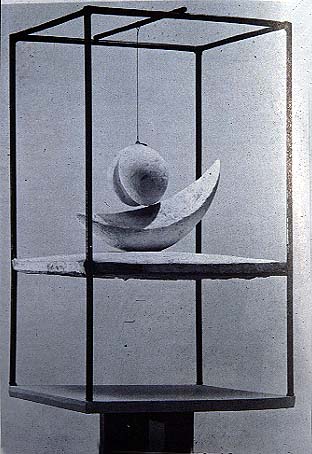
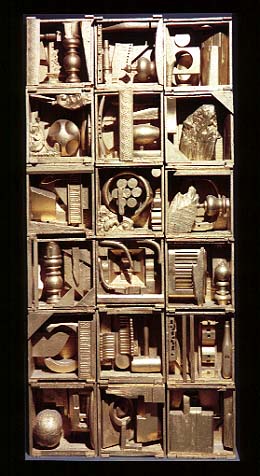
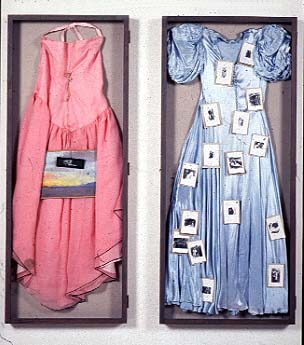
Annette Messager, "Story of Dresses", 1990
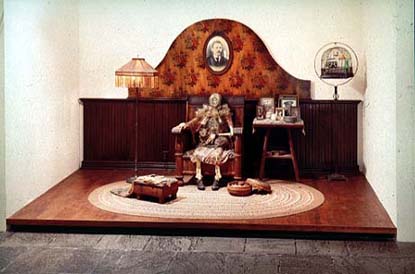
Edward Kienholz, "The Wait", 1964

Paul Thek, "Uncle Tomí Cabin", 1977
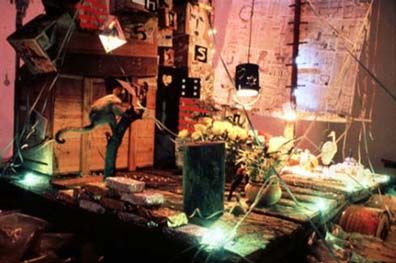
Paul Thek, "Noahís Raft", 1985
Student works
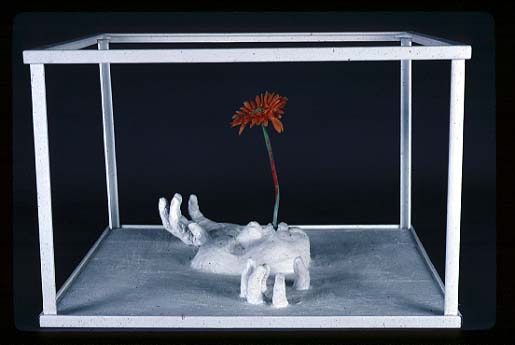
Megan Hallet
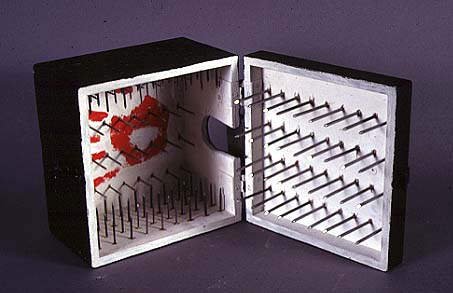
Chuck Nesea
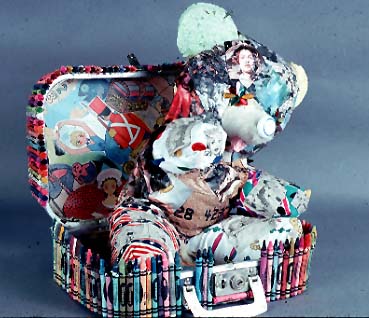
Jenifer Smith

Chris Woo

Stephanie Long